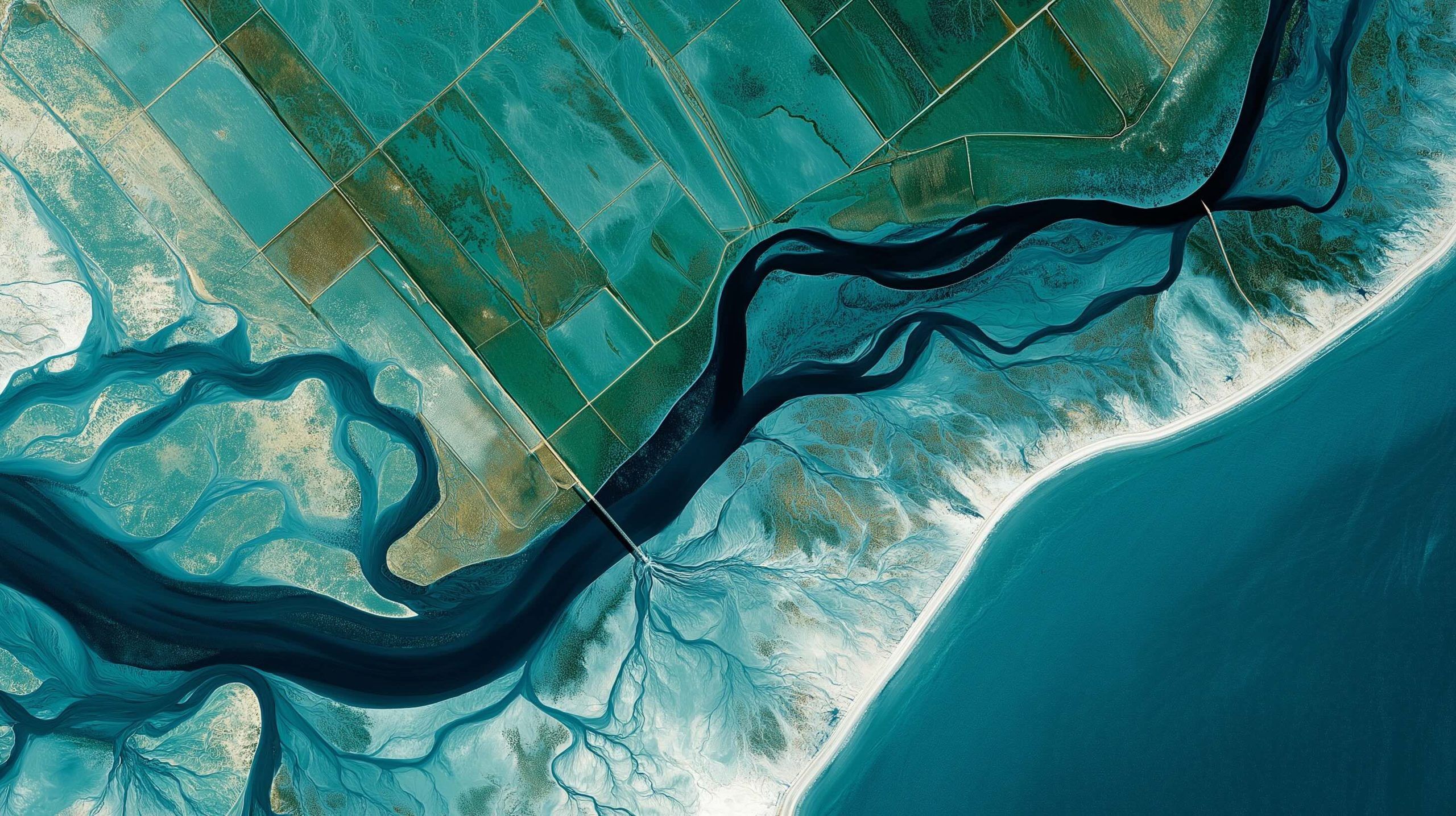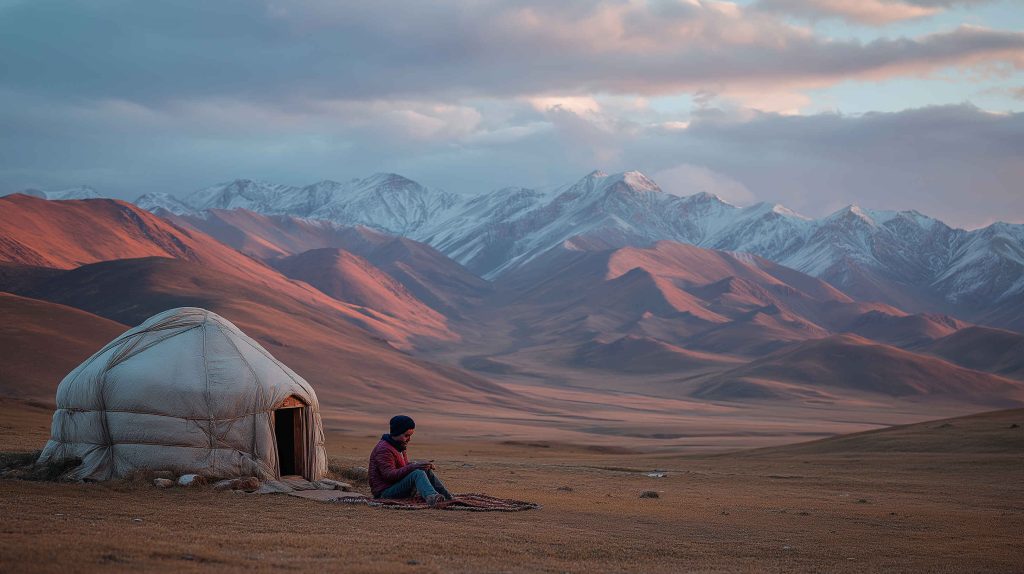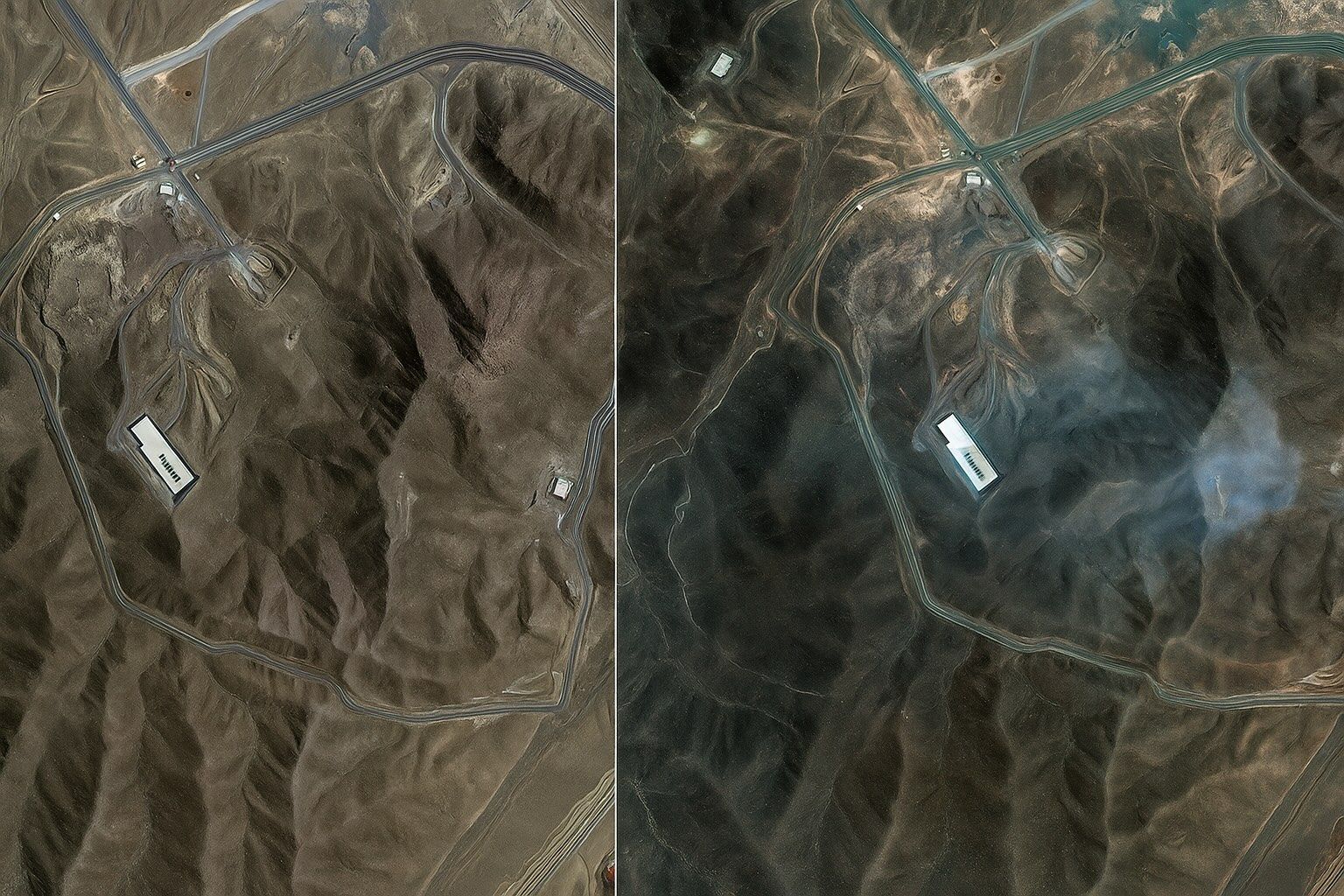- NOAA Earth in Real-Time offers an interactive, real-time global weather map with live imagery from GOES geostationary satellites, updated continuously and accessible free via nesdis.noaa.gov.
- NASA Worldview provides more than 1,000 global image layers (MODIS, VIIRS, Sentinel-2, etc.) with many layers updated within three hours of observation, plus animation, date comparison, and data download, all in a free web app.
- Zoom Earth aggregates imagery from NOAA GOES-East/West, EUMETSAT Meteosat, JMA Himawari, and NASA Terra/Aqua MODIS, updating as frequently as every 10–15 minutes and offering a free web and mobile app service.
- Google Earth provides high-resolution imagery from Landsat-8 and aerial sources, is not truly live, but is regularly updated (some areas 1–3 years old) with imagery down to about 15 cm per pixel in select cities, available on web, desktop, and mobile with a Historical Imagery slider.
- Sentinel Hub EO Browser lets users browse Copernicus imagery (Sentinel-2, Sentinel-1, etc.) with on-the-fly band combinations, NDVI, time-lapse animations, and a 3D terrain view, accessible free via web with optional paid extensions.
- EOS Data Analytics LandViewer is a freemium web platform that aggregates Sentinel-2, Landsat, MODIS, and high-resolution commercial imagery, offering NDVI, change detection, time-lapse, and a free tier with about 10 image downloads per day; paid plans start around $50 per month with per-km² high-resolution pricing.
- Planet Labs operates a fleet of approximately 200 Dove satellites delivering daily global imagery at about 3–4 meter resolution, with higher-resolution SkySat imagery at roughly 50 cm, accessible via Planet Explorer web and API, and priced at enterprise levels while offering NICFI free tropical-forest data for researchers.
- Maxar SecureWatch provides access to over 6 billion km² of archived imagery and roughly 3 million km² of new imagery daily, with resolutions up to 30 cm and delivery within 48 hours of collection via web and API, as a paid enterprise service.
- Airbus OneAtlas offers access to optical and radar imagery from Pléiades, SPOT, and Pléiades Neo (30 cm) plus TerraSAR-X and PAZ radar, with near-real-time tasking, a Living Library, web portal and API, and a 30-day free trial option.
- Capella Space delivers high-resolution SAR imagery up to 50 cm with all-weather, day-and-night capabilities, available via web portal or API within hours of collection, and supported by an Open Data program and paid pricing.
Live satellite imagery has become increasingly accessible, allowing anyone to view near real-time maps of Earth from space on web browsers or smartphones. This report reviews major platforms and services – both free public tools and professional-grade commercial systems – that provide live or near-real-time satellite images. We include official links, key features, platform availability (web/mobile), common use cases (from weather tracking to disaster response and agriculture), pricing info, and relevant user or provider quotes for each service. The goal is a comprehensive guide to the current landscape of real-time satellite mapping in 2025.
Publicly Accessible Live Satellite Imagery Platforms (Free)
These services are freely available to the general public, offering up-to-date satellite views through web interfaces or mobile apps.
NOAA “Earth in Real-Time” (Live Weather Satellite Map) – Web
The U.S. National Oceanic and Atmospheric Administration (NOAA) provides an interactive real-time global weather map featuring live imagery from its operational satellites. This browser-based tool delivers the latest images for monitoring cloud cover and storm systems as they develop. According to NOAA, “Experience Earth in Real-Time with NOAA’s interactive map featuring live satellite imagery… ideal for tracking clouds, following storm systems, and viewing Earth from space in stunning detail” [1]. Users can toggle dynamic layers for clouds, storms, atmospheric conditions and more, updated continuously. It’s essentially a real-time U.S. and global weather satellite viewer combining data from NOAA’s GOES (geostationary) satellites. The service is free via NOAA’s website (no login required). Typical use cases include watching tropical cyclones, checking regional cloud patterns before a flight, or viewing the Earth “live” from space for educational purposes. As NOAA describes, you can “access up-to-date views of global weather systems” and explore layers of recent satellite images “all in real time, right from your browser” [2]. (NOAA’s tool is web-based; there is no dedicated mobile app, but the site can be accessed on mobile browsers.)
NASA Worldview – Web
NASA Worldview is a powerful free web application for browsing daily satellite imagery from NASA’s fleet and partners. It offers over a thousand global image layers (e.g. MODIS, VIIRS, Sentinel-2, etc.) with many updated within hours of acquisition, essentially showing Earth “almost live.” NASA notes that Worldview lets users “interactively explore more than 1,000 global, full-resolution satellite imagery layers… and then download the underlying data”, with many layers “updated within three hours of observation, essentially showing Earth as it looks ‘right now’”, benefitting time-critical needs like wildfire management and flood monitoring [3] [4]. The interface allows switching dates and overlaying data; one can watch events like wildfires, dust storms, or volcanic eruptions unfold via frequent satellite passes. Use cases: disaster responders monitoring wildfire smoke or ash plumes, scientists tracking plankton blooms, or the public following phenomena like hurricanes or large power outages (visible in nighttime lights imagery). Worldview runs in a browser (desktop or mobile) and is completely free (imagery comes from open NASA/NOAA/ESA sources). It includes features to create animations, compare imagery across dates, and even plot data values. “Worldview is a great place to discover and explore visualizations of NASA satellite imagery,” says a NASA engineer, noting it can be used “to monitor natural phenomena as they’re happening [and] observe change over time… all within the application” [5]. (Note: NASA also offers a mobile app called NASA Earth Nowfor simplified real-time data on global climate features, but for full imagery the Worldview web app is the primary tool.)
Zoom Earth (Live Satellite Weather Map) – Web, Android, iOS App
Zoom Earth is a popular interactive map that displays near real-time global satellite images with a focus on weather. It updates imagery as frequently as every 10–15 minutes (especially for geostationary satellite coverage over the US and Europe), making it great for tracking developing weather systems. Zoom Earth’s interface overlays live satellite cloud imagery, animated radar, storm tracks, and forecast layers on a world map. The platform describes itself as an “interactive world weather map” where you can “Track hurricanes, cyclones, storms [and] view LIVE satellite images, rain radar, [and] forecast maps of wind [and] temperature” for any location [6]. The service aggregates data from multiple satellite sources: e.g. NOAA GOES-East/West, EUMETSAT Meteosat, JMA Himawari (for rapid cloud imagery), plus twice-daily high-resolution imagery from NASA’s polar-orbiting satellites (Terra/Aqua MODIS) [7]. Use cases: real-time weather watching (seeing storm movements, hurricane eye structure, thunderstorm growth), wildfire smoke tracking, or just enjoying a live view of Earth’s cloud cover. It also features a hurricane tracker with storm warning info and can show live wildfire “hot spots” and air quality data. Availability:Zoom Earth is accessible via web browser and also provides a dedicated mobile app (free on Android and iOS). The app allows you to “track the weather in real time” on the go [8]. Pricing: The service is free to use; there is no subscription required (it is supported by its developer Neave Interactive using open data sources). (In essence, Zoom Earth packages public satellite feeds into a user-friendly live map, useful for both casual users and weather enthusiasts.)
Google Earth & Google Maps (Satellite View) – Web, Desktop, Mobile App
Google Earth is a well-known platform for exploring high-resolution satellite imagery of the globe. While not truly “live” imagery, Google Earth offers a vast archive of aerial and satellite photos, some updated within the past year or even months for certain areas. It provides a seamless 3D digital globe enabling users to zoom from space down to their local neighborhood. As Google describes it: “See the world from above with high-resolution satellite imagery, explore 3D terrain and buildings in hundreds of cities, and dive in to streets with Street View’s 360° perspectives.” [9] Google Earth is available as a free web app (in Chrome/Edge browsers), a robust desktop app (Google Earth Pro), and a mobile app on Android/iOS. It’s not a real-time feed, but rather a regularly updated mosaic; many areas’ images are 1–3 years old, though some hot spots update more frequently. One unique feature is the Historical Imageryslider (on desktop) allowing you to view past imagery back decades in some locations. Use cases: virtual travel and exploration, planning hikes or photo trips via satellite view, education (students examining geography), and even navigation (Google Maps’ satellite layer is commonly used to scout routes or terrain). For example, a user can zoom in to see changes in a city over time or measure distances. The imagery comes from a mix of sources: Google notes its free images come from satellites like Landsat-8 as well as aerial photography (planes, drones) for high detail in cities [10]. In some urban areas, resolution is extremely sharp (down to 15 cm per pixel in select cities [11]). Do note that Google Maps (the default Maps app on web and phones) also has a “Satellite” view option – this uses the same imagery database as Google Earth. Google Maps is more geared to live traffic data and navigation, whereas Google Earth is for immersive viewing. Both are free (Google Earth Pro was made free in 2015) and widely accessible. However, because of the static nature of the imagery, Google’s services are best for exploration and general mapping rather than time-sensitive monitoring. For near-real updates in Google, one can use Google Earth Engine or the Earth Engine Timelapse for environmental changes, but these are specialized tools. In summary, Google Earth remains the go-to free app for global high-resolution imagery (with historical imagery) on all devices, even if it doesn’t provide live hourly pictures. (No subscription required; Google Earth/Maps are ad-supported/free.)
Sentinel Hub EO Browser (ESA Copernicus) – Web
For those interested in free, frequently-updated Earth imagery with more analytic capabilities, the Sentinel Hub EO Browser is an excellent tool. This web application (by Sinergise under the ESA Copernicus program) lets users browse and compare full-resolution images from multiple satellite missions (Copernicus Sentinel-1, Sentinel-2, Sentinel-3, Sentinel-5P; NASA/USGS Landsat; MODIS; etc.) almost in real-time. You can simply navigate to an area of interest and choose dates to see available imagery – often including data from just the past day or two (especially for Sentinel-2 which has 5-day revisit globally, or Sentinel-1 radar updated every 6-12 days per location). The EO Browser supports on-the-fly band combinations and even basic analytics (NDVI, custom script visuals) in your browser. In fact, Sentinel Hub’s mission is to “make satellite data easily accessible for browsing and analysis, without [users] managing infrastructure” [12]. Features: You can overlay different spectral indices (e.g. NDVI for vegetation health), compare images side-by-side or with a slider, create time-lapse animations of an area, and download imagery. It even includes a 3D terrain view mode for visualizing imagery over landscape. While the interface is quite advanced (aimed at researchers and power users), it provides an incredible wealth of free imagery – for example, one can view Sentinel-2 optical images (10 m resolution) typically within hours or a day of capture, or Sentinel-1 radar images which penetrate clouds. Use cases: environmental monitoring (forest changes, crop health using Sentinel-2 every few days), disaster assessment (Sentinel-1 radar to see floods under clouds in near-real-time), urban growth observation, and scientific research. Access & pricing: EO Browser can be used free without login for basic browsing (with some resolution limits). Creating a free account allows somewhat higher resolution exports and more features, while commercial API access or heavy usage may require a subscription to Sentinel Hub services. Essentially, all the Copernicus Sentinel imagery is free and open, and EO Browser is a user-friendly portal to that data. It’s a web-only application (no standalone mobile app, but mobile web works with limited functionality). For most public users, the free tier is sufficient to explore recent satellite images across the globe.
(Other free notable mentions: USGS EarthExplorer and NASA Earthdata Search are portals providing access to tons of satellite data (Landsat, MODIS, etc.) including historical and some near-real-time feeds. However, these are more data download sites rather than live map viewers [13] [14]. Casual users may prefer interactive tools like Worldview or EO Browser for visualization. Additionally, for live weather imagery specifically, apps like Windy (with a satellite cloud layer updated every 5 minutes) and regional services (e.g. EUMETSAT’s viewer for Europe, JMA’s for Asia) provide quick viewing of clouds and radar. Another unique offering is the International Space Station (ISS) live feed, where NASA streams a live video view of Earth from the ISS cameras – not a map, but a real “live” Earth view useful for enthusiasts.)
Professional and Commercial Real-Time Satellite Services (High-End)
The following are enterprise-grade platforms offering on-demand, high-resolution satellite imagery, often with near real-time delivery and specialized analytics. These typically require a subscription or purchase and are used in fields like intelligence, mapping, agriculture, and disaster response. Many have web interfaces and APIs, and some offer mobile apps or at least mobile-friendly dashboards.
Planet Labs – Daily Earth Imaging (Web, API; Paid Subscription)
Planet Labs operates the world’s largest fleet of Earth observation satellites, famous for its daily global imagerycapability. Planet’s constellation of ~200 “Dove” nano-satellites (PlanetScope) images virtually the entire Earth land area each day at ~3–4 meter resolution [15]. This unprecedented revisit frequency means users can get new images of their area of interest every single day, often delivered within hours of daylight. As one partner describes, “With hundreds of Dove satellites in orbit, PlanetScope provides a high-resolution, continuous, and complete view of the world from above, every day.” [16]. In addition, Planet operates a fleet of higher-resolution satellites called SkySat (now evolving to Pelican) that can be tasked on-demand to collect imagery at about 50 cm resolution, with fast turnaround. Planet’s Platform: Clients use the Planet web dashboard or API to search and download imagery. The platform offers a “monitoring” subscription for automated delivery of new imagery and a “tasking” service for priority collects. Planet emphasizes timely insights – “Hundreds of Doves orbit the planet every 90 minutes, providing near real-time images for time-sensitive monitoring” [17]. For example, a commodity trader might monitor a port daily for changes in shipping traffic, or an NGO might track deforestation day-by-day in the Amazon. Use cases: agriculture (daily crop monitoring), forestry (detecting illegal logging or wildfire damage quickly), intelligence and surveillance (monitoring military activity or infrastructure developments), environmental changes, and disaster response (e.g. checking flood extent or damage on consecutive days). Planet’s data has been used to see changes literally overnight – e.g., before/after imagery of events one day apart. For instance, Planet imagery captured rapid construction of facilities or the aftermath of disasters with a one-day gap. The Planet platform (Planet Explorer) is available via web browser (for analysts) and via REST API for integration into GIS software. Pricing: Planet is a commercial service – subscriptions are typically enterprise contracts (cost can range widely based on area and frequency, often tens to hundreds of thousands of dollars per year for large areas). However, they do offer programs for researchers and NGOs (some imagery provided free for non-commercial use via initiatives like the NICFI tropical forest program). A small sample of Planet imagery is publicly available (their gallery and some open datasets), but generally full access is paid. In summary, Planet’s value is in high revisit frequency – they deliver “insights at the speed of change.” One marketing line for the high-res SkySat is: “At 50 cm resolution, Planet Tasking provides organizations with real-time intelligence to proactively identify blind spots, anticipate events, and have confidence in the next mission-critical decision.” [18]. And as Planet notes, “imagery captured today [is] viewable today”, thanks to a fully automated pipeline for rapid delivery [19]. (Planet Labs does not have a public-facing “smartphone app” – their services are accessed via web or API by customers).
EOS Data Analytics – LandViewer (Web; Free Tier & Paid Plans)
EOSDA LandViewer is an example of a professional online platform that aggregates imagery from many sources and provides on-the-fly analysis tools. A product of EOS Data Analytics, LandViewer offers an easy interface to search, visualize, and analyze satellite images (both real-time and historical) from sources like Sentinel-2, Landsat, MODIS, as well as high-resolution commercial imagery on demand. The platform’s pitch is to “fuel your decision-making with advanced real-time and historical satellite imagery search, intuitive visualizations, and powerful analytical tools — all in one platform” [20]. Users can access high-resolution optical images, SAR (radar) data, and digital elevation models, all from a single web app. Notably, LandViewer lets you explore “live” satellite images worldwide – for example, one can quickly see the latest Sentinel-2 (10 m) image of an area from the past few days, or even purchase a recent commercial image (down to 0.3 m) directly through the interface [21].
Key features: The service includes tools for on-the-fly image processing: you can apply various band combinations or indices (NDVI for vegetation, false-color, etc.), perform image comparison and change detection with slider tools, generate time-lapse animations of changes, and more [22] [23]. It essentially provides GIS-like analysis in a browser, without needing to download data. For instance, a user can draw an area of interest and get notifications when new imagery is available for that area [24] – very useful for monitoring. Use cases: LandViewer is marketed across industries – agriculture (monitoring crop health via NDVI, checking fields for drought or pest issues), forestry, urban development, insurance (assessing property damage from new imagery), environmental monitoring, and disaster management. For example, farmers can use live satellite images and vegetation indices to check crop health and track land changes for better daily operations [25], while emergency responders can use near real-time imagery to see flood extents or wildfire burn scars. EOS Data Analytics also highlights that “during disasters like wildfires or floods, near real-time satellite imagery aids response efforts” [26]. The platform supports these scenarios by making it easy to get the latest available images and even task new imagery.
Availability & pricing: EOSDA LandViewer is accessed via web browser; there’s no separate mobile app, but the site is reasonably accessible on tablet browsers. The service operates on a freemium model – you can create a free account which allows a limited number of image downloads or high-res views per day. According to one user, “you can only download/view 10 pictures a day for free” on LandViewer, after which a subscription is needed [27]. Paid plans (often called “Premium” or enterprise plans) start around $50 per month for higher usage, and scale up for professionals requiring many images or higher resolution data [28]. Additionally, if you want to purchase very high-res imagery (e.g., a Maxar or Airbus 0.5m image) through LandViewer, that comes with per-square-kilometer costs (the platform provides pricing info when ordering, e.g. $1.70–$30 per km² depending on resolution) [29]. In summary, EOSDA LandViewer is a one-stop shop to view and analyze “live” Earth imagery with GIS tools in-browser. It has a free tier for casual use, with paid options for heavy or commercial users.
Maxar SecureWatch (Maxar MGP) – High-Resolution Imagery On-Demand (Web; Paid)
Maxar Technologies (formerly DigitalGlobe) is the leading provider of high-resolution commercial satellite imagery – they operate the WorldView/GeoEye satellites that capture extremely detailed images (up to 30 cm per pixel). Maxar’s flagship online service for imagery access is called SecureWatch (recently renamed the Maxar Geospatial Platform (MGP) Pro). This is a cloud-based subscription service that gives clients on-demand access to Maxar’s enormous imagery archive and newest collections. SecureWatch is often described as “the premier service for secure and timely access to Earth Intelligence” [30]. Subscribers can log in via web browser to search and instantly view/download imagery within hours of it being collected. Maxar advertises that its satellite images are available in SecureWatch “within 48 hours of collection”, enabling users to monitor events around the globe almost in real time [31]. In practice, many standard images (especially in key areas) are online within a few hours to a day of capture.
Features and content: SecureWatch provides unrivaled global coverage and resolution – it offers access to over 6 billion km² of imagery in its archives, including a live feed of new images covering ~3 million km² added each day [32]. The imagery is extremely high quality (Maxar’s best satellites capture 30–50 cm resolution, meaning you can discern vehicles, airplanes, building details, etc.). A SecureWatch subscription grants a user the ability to view recent imagery, compare before-and-after scenes, and integrate the imagery into their own GIS systems via APIs. Maxar notes you get a “living library of over twenty years’ worth of high-resolution imagery”, plus daily new images [33]. They highlight “premium imagery… up to 30 cm resolution” and “global coverage with rapid refresh (3.8 million km² new imagery daily)” as key benefits [34] [35]. In other words, if something important happens anywhere on Earth, Maxar likely has an image of it within a day or two, accessible through SecureWatch. Use cases: government and military intelligence (tracking activity at facilities, mapping installations), mapping agencies updating base maps, disaster response (high-res imagery of an earthquake or hurricane impact zone the next day for damage assessment), and companies monitoring facilities or infrastructure projects. For example, during a natural disaster, responders might use SecureWatch to get post-event satellite photos (like 30 cm images of a town after a tornado) to guide relief efforts. Maxar’s imagery is frequently seen in news media as well (e.g., imagery of conflict zones or ship traffic), underscoring its value.
Access & pricing: SecureWatch is a premium paid service targeted at enterprise and government clients. Pricing is not publicly listed in detail – it’s typically a yearly subscription with costs depending on usage (areas and volume). On AWS Marketplace, the service is listed in a custom contract model [36]. In summary, expect subscriptions to be in the tens of thousands of dollars per year for substantial access. (Maxar sometimes offers smaller packages or per-image pricing via resellers for specific projects.) There is no public free version of SecureWatch, but Maxar does have an Open Data program where they release some imagery for free for disaster events. For platform availability: it is accessible through web browsers (no mobile app, but the web interface can be used on a tablet) and has an API for integration into software like ArcGIS or QGIS. To quote Maxar/Esri: “SecureWatch provides unrivaled coverage, quality and flexibility. Subscribers can quickly access over 3 million km² of daily image collections, plus more than 6 billion km² of archived imagery at up to 30 cm resolution… with secure 24/7 on-demand availability” [37]. Essentially, if you need the highest-resolution imagery updated in near-real-time, Maxar’s service is the gold standard (at a premium price).
Airbus OneAtlas – On-Demand Optical & Radar Imagery (Web/API; Paid)
Airbus Defence & Space offers its own suite of satellite imagery services under the OneAtlas platform. Airbus operates a constellation of optical satellites (including Pléiades and SPOT series with up to 30 cm resolution, and the new Pléiades Neo at 30 cm) as well as radar satellites (TerraSAR-X, PAZ, etc.). The OneAtlas online platform allows users to search Airbus’s imagery archive and task new imagery, similar to Maxar’s service. OneAtlas provides both subscription access (streaming base maps, monthly quotas of new images) and pay-per-order options for single-image purchases [38] [39]. A unique aspect is the combination of optical and radar – users can get imagery even if it’s cloudy via radar. Airbus emphasizes that they can deliver near real-time tasking results thanks to fast satellite retasking and downlink. In a testimonial, a partner states: “We are proud to be able to offer near real time services thanks to the reliable and fast tasking service offered by Airbus… These capabilities really boost the opportunity for value-added service providers to offer real solutions to customer needs.” [40]. This highlights that Airbus can quickly capture and deliver imagery for urgent needs (often they can get an image within hours if a satellite is within range and skies are clear, or use radar for all-weather).
Features: Through OneAtlas, users have access to the “Living Library” – a curated Airbus imagery archive with global coverage, which can be streamed or downloaded on demand [41]. There are also analytic services (Airbus provides tools and APIs for running analytics on their imagery). For example, Airbus offers automated monitoring for defense or maritime domains. They also supply reference layers (like a global OneAtlas basemap that is kept updated, and elevation models). OneAtlas, like its competitors, supports web portal access and integration into GIS software via API. Use cases: similar to Maxar – defense/intel, emergency response, mapping – with the addition that Airbus’s SAR (radar) imagery is useful for seeing through clouds or at night, which is valuable for surveillance and environmental monitoring. For instance, after a hurricane, if clouds persist, an Airbus TerraSAR-X radar image can reveal flood extent under the cloud cover. Airbus imagery is also often used in mapping and urban planning; the Pléiades images (50cm/30cm) are high clarity for city mapping. Availability & pricing: OneAtlas requires registration and is commercial. They offer free trial options (e.g., a 30-day trial with a certain quota of high-res data [42]) and even allow guest access to preview their catalog without downloading (so users can see what images exist before buying) [43] [44]. Pricing can be subscription-based (for a set amount of data per month) or per-image. For example, one could task a new Pléiades Neo image or purchase an archived SPOT image – each comes with a price per km² depending on resolution. Airbus doesn’t publish a simple price list publicly; it’s quote-based or via resellers. In summary, Airbus OneAtlas is a comprehensive imagery service, notable for combining optical and radar data and for its rapid tasking capability to support near-real-time intelligence. It is used widely in Europe and by global customers as an alternative/complement to Maxar. (No dedicated mobile app; access is through web portal and APIs. In critical scenarios, Airbus and partners also provide rush imagery deliveries directly to clients.)
BlackSky Spectra (Real-Time Geospatial Intelligence) – Web/API; Paid
BlackSky is a newer entrant that focuses on real-time monitoring and analytics. They operate a growing constellation of small satellites (currently Gen-2 and new Gen-3 satellites) that can revisit the same location many times per day. BlackSky’s Gen-3 satellites image at ~50 cm resolution and are designed for rapid revisit – up to each hour over the same site in some cases [45]. BlackSky pairs this frequent-imagery capability with an AI/ML-driven analytics platform called Spectra AI. The Spectra platform automatically analyzes incoming images (and other data feeds like news or social media) to detect changes or anomalies, delivering alerts and insights to users. The company describes itself as a “real-time, space-based intelligence” provider delivering “on-demand, high-frequency imagery and analytics” [46]. In practice, a client could task BlackSky’s satellites to monitor a location (say, a factory or a port) and receive alert notifications within minutes of a change (like new vehicles appearing, or a ship moving). BlackSky emphasizes speed – for instance, they recently demonstrated delivering an image 12 hours after the satellite’s launch, showing how quickly they can get imagery online [47] [48].
Features: BlackSky’s Spectra AI platform is a web and API service where users can define sites of interest and see a live dashboard of periodic satellite images and analytic results. It’s built to enable “tipping and cueing,” where an alert from one source (say automatic detection of increased activity) can cue additional imaging. Their Gen-3 satellites provide 35 cm resolution imagery now, closing the gap with larger competitors [49]. A key offering is the high revisit in morning and afternoon lighting conditions, giving essentially near-real-time monitoring during the day. BlackSky’s marketing tagline highlights this: “Gen-3 combines hourly revisit with very-high resolution imagery and AI-enabled outputs delivered at industry-leading speed.” [50]. Use cases: defense and intelligence (monitoring military sites, border security with rapid updates), supply chain and economic monitoring (observing factory output via parking lot cars or tracking activity at ports on an hourly basis), and crisis monitoring (continuous looks at, say, a volcano or conflict zone). BlackSky has been used, for example, to monitor the buildup of military units or to watch wildfire progression through smoke (frequent shots can catch glimpses when winds shift smoke). The platform’s AI might flag changes like new construction or flooding automatically. Availability: BlackSky’s services are commercial – typically via subscription to the Spectra platform. They target government and enterprise clients (they have contracts with e.g. the U.S. Department of Defense and other nations). There’s no public free use. Interested users have to engage with their sales for access. The interface is web-based (and likely mobile-friendly but not a consumer app). BlackSky often partners with other analytic firms or sells through government contracts. In short, BlackSky distinguishes itself by offering a high revisit rate (hourly imaging) with an integrated analytics feed, essentially delivering “insights as a service” in near-real-time. As SpaceNews reported, “Its newest Gen-3 satellites can capture images with 35-cm resolution and revisit the same spot up to once per hour” [51] – a capability well-suited for surveillance and time-sensitive intelligence needs.
Capella Space – All-Weather Radar Imaging (Web/API; Paid)
Rounding out the landscape, it’s worth mentioning Capella Space, a leader in high-resolution SAR (Synthetic Aperture Radar) imagery. Capella operates a fleet of small radar satellites that can collect images at night and through clouds at resolutions as fine as 50 cm. While their service is not a “live map” per se, it provides near-real-time data in conditions where optical satellites can’t (e.g., bad weather or darkness). Capella offers an online console and API for tasking their satellites and retrieving imagery, often within a few hours of collection. The company touts “real-time, all-weather insights”, noting “Capella Space delivers high-resolution SAR data for real-time, all-weather insights. Monitor critical areas and make informed decisions with confidence.” [52]. Use cases: disaster response (e.g., detecting flooding under hurricane clouds, or imaging wildfire hotspots through smoke at night), maritime surveillance (radar can identify ships regardless of clouds or fog), and military intelligence (seeing through camouflage or in any lighting). Capella’s platform is commercial, with pricing based on imaging requests. They also have an Open Data program showcasing samples of their radar imagery. The main point is that radar satellite services like Capellacomplement the optical imagery services – providing a form of “live” view when optical is blind. For example, during a cyclone, while NOAA or Maxar optical images might be obscured by clouds, a Capella SAR image could give a clear picture of flooded regions or infrastructure damage. Capella’s customers access imagery via web portal or API (no public app). This represents the growing trend of on-demand, real-time Earth observation extending beyond visible light.
Conclusion
In 2025, users have an array of options to access live or near-real-time satellite maps, ranging from free public websites to sophisticated commercial intelligence platforms. Free tools like NOAA’s real-time weather map, NASA Worldview, Zoom Earth, and Google Earth bring near-up-to-the-minute views of Earth to anyone with an internet connection – whether for watching a hurricane, exploring recent imagery of your hometown, or studying environmental changes. For more demanding applications, professional services from companies like Planet, Maxar, Airbus, BlackSky, and Capella provide unprecedented capabilities – daily global coverage, sub-meter resolution, rapid revisit, and analytic insights – at a cost. These are empowering use cases in agriculture, disaster response, national security, research, and beyond.
It’s important to match the tool to the task: a farmer or student can leverage free Sentinel data via EO Browser or LandViewer to check crop health or map a wildfire’s burn scar, whereas a government analyst might rely on Maxar or BlackSky for the latest high-res intel updated hourly. As satellite technology and internet delivery continue to advance, the gap between “live” and “observation” is closing. Many providers are striving for truly real-time Earth observation – for example, streaming video from satellites or AI that alerts you the moment something changes on the ground. For now, the services listed above represent the state-of-the-art for live satellite imagery accessible on web and mobile, offering a remarkable window onto our dynamic planet in near real time.
References
1. www.nesdis.noaa.gov, 2. www.nesdis.noaa.gov, 3. www.earthdata.nasa.gov, 4. www.earthdata.nasa.gov, 5. www.earthdata.nasa.gov, 6. zoom.earth, 7. zoom.earth, 8. zoom.earth, 9. play.google.com, 10. eos.com, 11. eos.com, 12. www.sentinel-hub.com, 13. eos.com, 14. eos.com, 15. interpine.nz, 16. interpine.nz, 17. www.planet.com, 18. interpine.nz, 19. interpine.nz, 20. eos.com, 21. eos.com, 22. eos.com, 23. eos.com, 24. eos.com, 25. eos.com, 26. eos.com, 27. www.reddit.com, 28. www.reddit.com, 29. eos.com, 30. www.esri.com, 31. aws.amazon.com, 32. www.esri.com, 33. www.esri.com, 34. aws.amazon.com, 35. aws.amazon.com, 36. aws.amazon.com, 37. www.esri.com, 38. space-solutions.airbus.com, 39. space-solutions.airbus.com, 40. space-solutions.airbus.com, 41. space-solutions.airbus.com, 42. space-solutions.airbus.com, 43. space-solutions.airbus.com, 44. space-solutions.airbus.com, 45. www.blacksky.com, 46. ir.blacksky.com, 47. www.blacksky.com, 48. www.blacksky.com, 49. www.blacksky.com, 50. www.blacksky.com, 51. www.blacksky.com, 52. www.capellaspace.com









